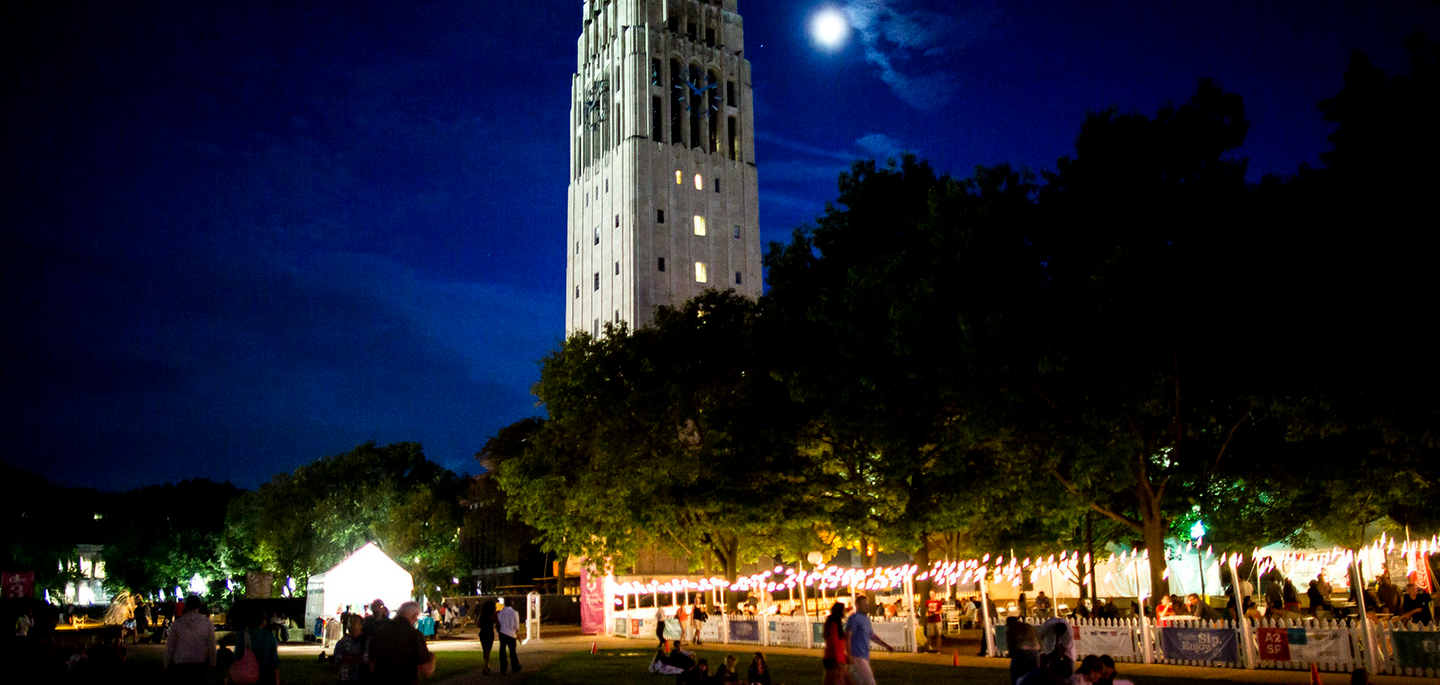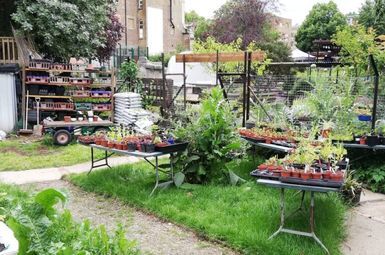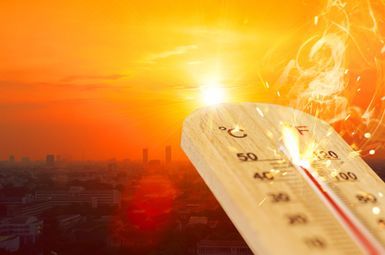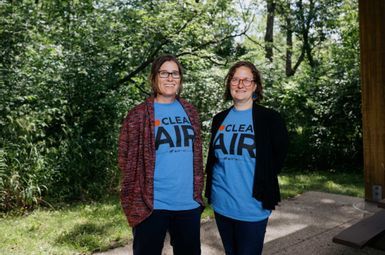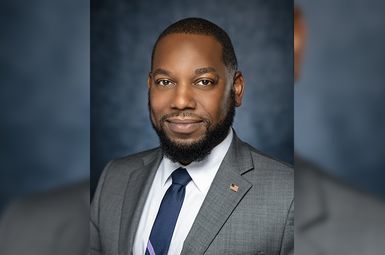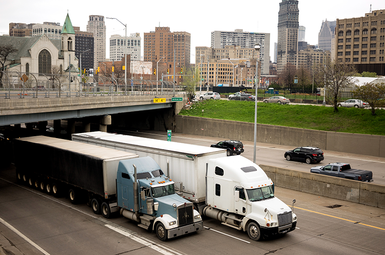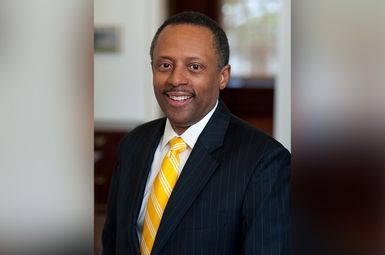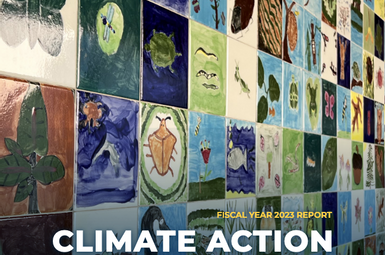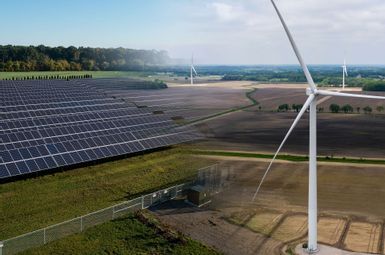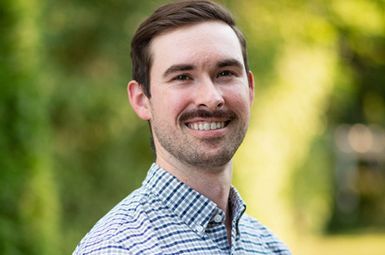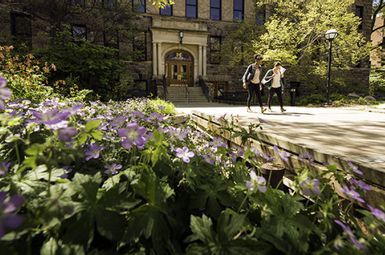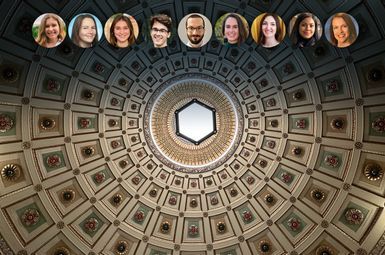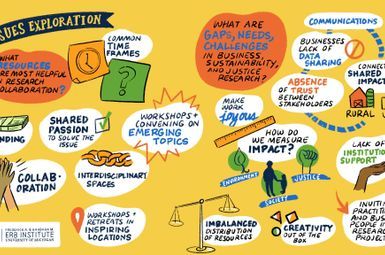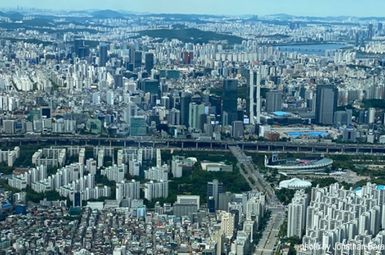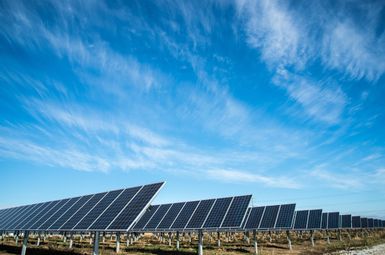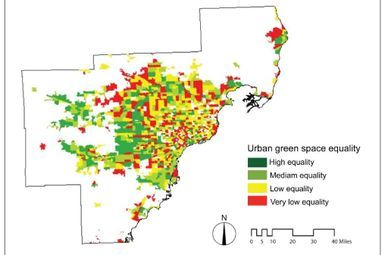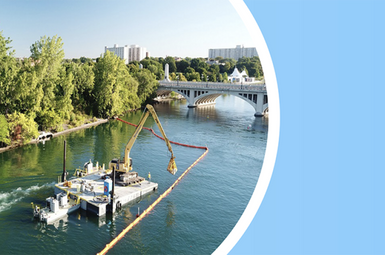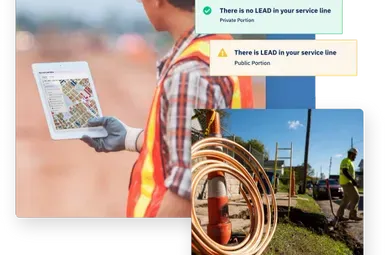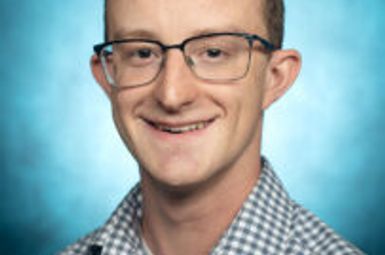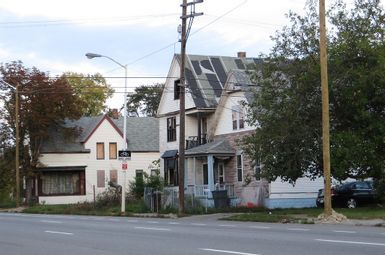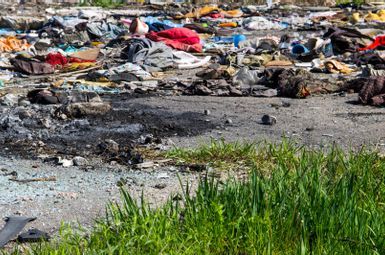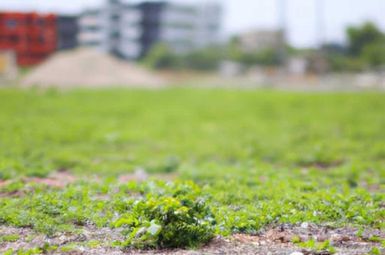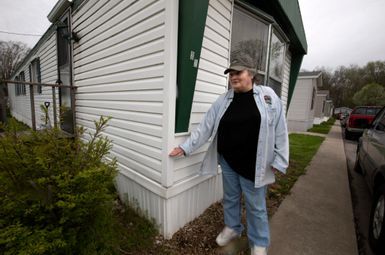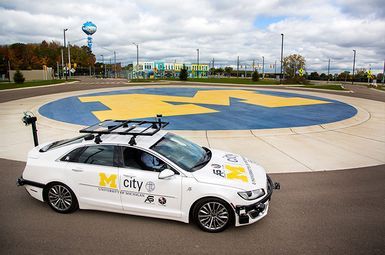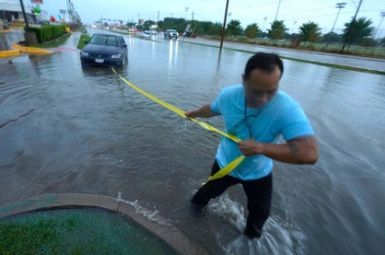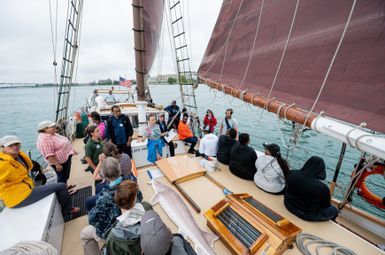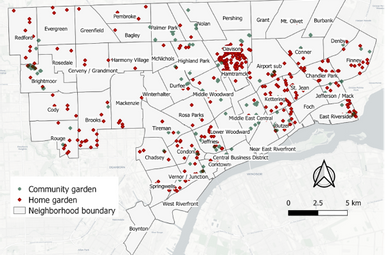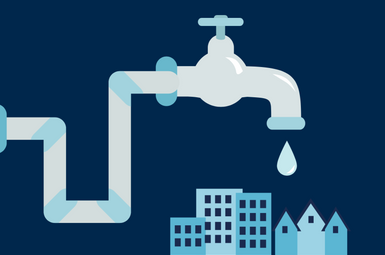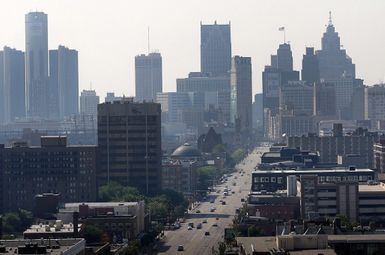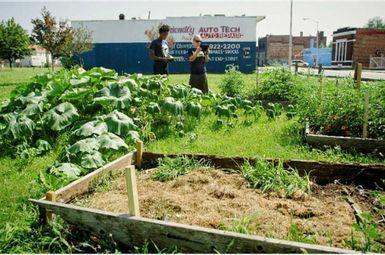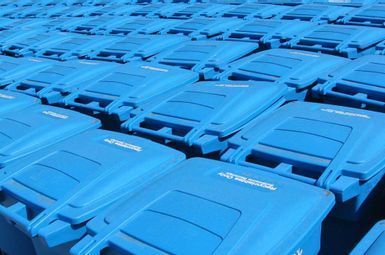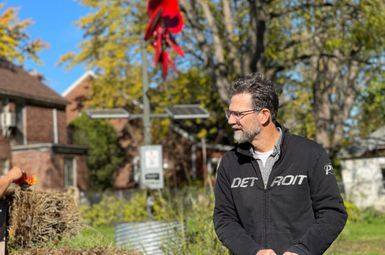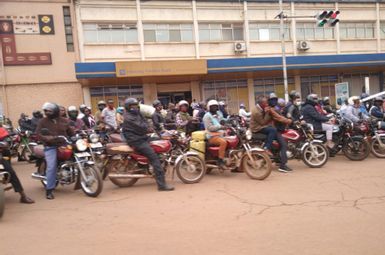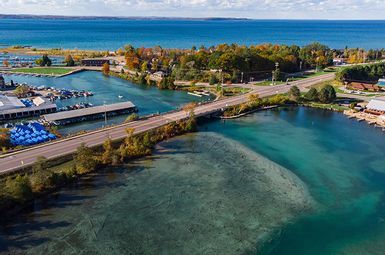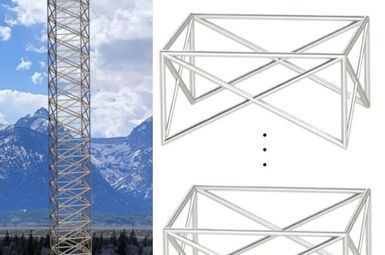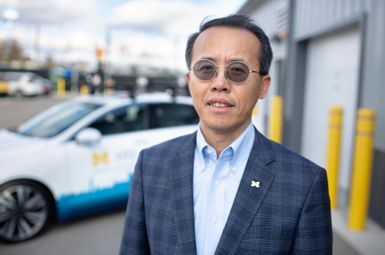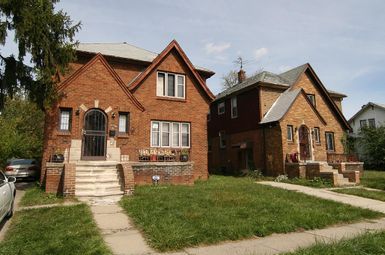Sustainability issues manifest differently in communities all over the world. Cities face challenges and opportunities related to evolving modes of mobility, access to renewable energy sources, changing land use, and the health and well-being of residents, among other issues. University of Michigan experts at centers like the Urban Collaboratory and Urban Energy Justice Lab are examining the interplay between cities, communities, and broader global sustainability, and sharing their insights with urban planners, policymakers, businesses, and community organizations.
2023 warmest year on record
"“And the warming will continue to accelerate until we halt the burning of fossil fuels. This means continued worsening extreme heat and heat waves, but also many other worsening climate extremes driven by warmer temperatures. More severe droughts, more intense rainfall, more devastating hurricanes and bigger, more widespread wildfires."
Associate Professor Tony Reames will return to SEAS after serving at the Department of Energy
Associate Professor Tony Reames will be returning to the University of Michigan School for Environment and Sustainability (SEAS) from his leave of absence at the Department of Energy (DOE), where he served as the Principal Deputy Director for State and Community Energy Programs and the DOE’s Deputy Director for Energy Justice. Reames will become the Tishman Professor of Environmental Justice at SEAS and serve as the new Director of the SEAS Detroit Sustainability Clinic, effective January 2024.
Lewis on the future of climate resilience in “haven” cities
Ann Arbor and other cities across the Midwest and Northeast have been referred to by climate specialists as “climate havens,” natural areas of refuge that are relatively safe from extreme weather events such as intense heat and tropical storms.
U-M publishes second annual climate action report
Since 2010, the university has reduced its total greenhouse gas emissions by 28%, even as total building area has increased by 14%. U-M is on pace to reduce its total quantified emissions by 50% by 2025, exceeding Intergovernmental Panel on Climate Change guidance to reduce emissions by 45% by 2030.
Center to help communities tackle renewable energy projects
The Center for EmPowering Communities will help Michigan communities tackle the planning and zoning challenges related to renewable energy projects such as wind and solar installations. In addition, the center will spur collaborative research that integrates social science with technology design, community engagement and policymaking.
U-M team wins first place in DOE carbon competition
The winning submission provided a hyperlocal blueprint for safe CO2 sequestration and integrative city planning in Houston, Texas, with a replicable pipeline system designed for major metropolitan areas.
Justice should be an action, not only a core value
Instances of injustice lie everywhere—from workers’ rights violations to pollution that disproportionately harms low-income communities of color. The Erb Institute recently convened the workshop “Building Connections for Business, Sustainability & Justice Research,” bringing together scholars, corporate leaders and advocates to explore how research can inform solutions to pressing environmental, social and racial justice challenges.
Groundbreaking project at Taubman College involving novel 3D concrete printing method
Architect Mania Aghaei Meibodi and researchers Alireza Bayramvand and Yuxin Lin of the DART lab at U-M’s Taubman College of Architecture and Urban Planning, have developed a method for creating ultra-lightweight, waste-free concrete. The method reduces weight by 72% as compared to conventional, solid concrete of the same size, and is leading to new partnerships and patents beyond U-M.
How households adapt to water scarcity: New study sheds light on hidden costs of global Issue
As climate change and population growth make water scarcity increasingly common, a much larger share of the global population will be forced to reckon with the costs of urban water scarcity. A new study sheds light on how households bear the monetary and nonmonetary costs when water supply is intermittent, rather than continuous—with policy implications that could help make urban water safer, more sustainable and more equitable.
Living labs to advance low-carbon building construction
The world’s building stock is expected to double by 2060, adding the equivalent of one New York City in new construction every month. Yet construction methods and materials that dominate the building sector are carbon-intensive, unhealthy for people, destructive to the environment, and are becoming increasingly expensive, with much of the burden falling on vulnerable populations.
U-M seeking 25 megawatts of on-campus solar power
U-M is planning to build on-campus solar installations with a capacity of 25 megawatts across the Dearborn, Flint and Ann Arbor campuses, including Michigan Medicine and Athletics. The total amount of electricity that would be generated by the installations is estimated to equal the power consumed by approximately 3,000 homes annually.
Michigan sustainability case: A tale of two (polluted) cities
Classmates Cecilia Garibay and Dolores Migdalia Perales teamed up to develop the Michigan Sustainability Case, “A Tale of Two (Polluted) Cities: Latinx communities and their allies face air pollution in Southwest Detroit and Southwest Los Angeles.”
U-M startup joins White House partnership to remove lead pipes
A U-M startup that helped accelerate the removal of dangerous lead pipes in Flint and many other communities has joined a White House partnership aimed at replacing all of the nation’s lead service lines in a decade. The public-private initiative aims to expedite the removal of lead in drinking water — a problem that rose to national prominence when lead was discovered in Flint’s drinking water several years ago and spurred a public health crisis.
$2.2M grant to increase understanding of the relationship between illegal dumping and community violence
A $2.2 million, four-year grant from the CDC will fund a study examining the effects of illegal dumping interventions on the prevention of violent crime in Flint, Michigan. U-M School of Public Health researchers are partnering with Genesee County Land Bank and the Center for Community Progress to conduct the research on county-owned vacant lots to develop sustainable approaches to curb illegal dumping and community violence.
Study: Vacant lot greening can reduce community crime, violence
Communities that are engaged in cleaning, mowing and repurposing vacant spaces are likely to experience greater reductions in violence and crime than neighborhoods that do not participate in these activities, according to new research led by the University of Michigan.
When climate change hits home
Many small and mid-sized communities like Goshen, IN simply don’t have the resources to tackle a global crisis like climate change on their own. So in 2018, Goshen was one of 12 cities that partnered with Great Lakes Integrated Sciences and Assessments (GLISA), an organization led by U-M that’s working to help small and mid-sized cities plan for a future that will be shaped by a changing climate.
$5M to enable remote, next-generation autonomous vehicle testing at Mcity
Mcity, which operates the world’s first purpose-built test environment for connected and autonomous vehicles (AVs), will invest $5.1 million from the National Science Foundation to supercharge the facility’s evolution into a test track unlike any other. By enhancing its physical testing environment, adding virtual reality software and generating real-world datasets, Mcity can provide tailor-made simulation scenarios for AV software testing.
Examining the effects of flooding on Detroit residents' mental health
As a board member of the nonprofit Cass Community Social Services organization in Detroit, SEAS master’s student Isabella Shehab has seen firsthand the challenges the city and its residents face: vacant buildings, aging infrastructure, flooding. Now, Shehab is using a scholarship awarded through the Landscape Architecture Foundation (LAF) to research the impacts these challenges have on Detroit residents’ mental health and well-being—all with an eye on solutions.
Detroit River Story Lab embarks on Skiff and Schooner program for second summer
The Detroit River Story Lab’s Skiff and Schooner Program is setting sail for its second summer, this time accommodating even more students in its quest to foster connection between the river and its communities. Students from 15 Detroit high schools, two colleges and six youth-serving organizations will board the schooner throughout the summer to learn about various topics focused on the environmental and cultural history of the Detroit River, ranging from marine biology and wildlife restoration to the Underground Railroad.
Majority of Detroiters report stable, improved financial situation compared to year ago
Two years into the pandemic, 72% of Detroit residents say their financial situation has stabilized or improved compared to a year ago, and there's evidence that stimulus checks and the expanded Child Tax Credit played a role in reducing Detroiters' experiences of economic hardship. Additionally, 17% of Detroiters reported experiencing one or more utility or service shut-offs in the last year, with the most common form being the disconnection of phone or internet service.
Urban agriculture in Detroit: Scattering vs. clustering and the prospects for scaling up
Despite Detroit’s reputation as a mecca for urban agriculture, a new analysis of the city’s Lower Eastside, which covers 15 square miles, found that community and private gardens occupy less than 1% of the vacant land. Even so, gardens there play an important role in reducing neighborhood blight and have the potential to provide other significant benefits to residents in the future.
Dearborn professor works in partnership to reinvigorate Detroit
To Paul Draus, a trash-filled city alleyway is an opportunity, a river abused by industrial waste has potential and people battling addiction have promise. Detroit has plenty of all three, and Draus has joined arms with people trying to transform those seemingly undesirable qualities into something beneficial and beautiful.
Electrifying motorcycle taxis in Kampala, Uganda, shows air pollution benefits
In a new U-M study, researchers set out to understand the air pollutant emissions impacts of electrifying motorcycle taxis in Kampala, Uganda. Findings indicate that electrified motorcycles can reduce emissions of global and some local air pollutants, yielding global and potentially local sustainability benefits.
Catalyst grants support key steps toward sustainability, justice
Five newly awarded catalyst grants from the Graham Sustainability Institute will fund projects designed to advance potential infrastructure solutions across energy, transportation, and the built environment. The projects will facilitate climate change adaptation, test products aimed to reduce carbon emissions, and foreground equity and justice in sustainability interventions.
Calculating the best shapes for things to come
Maximizing the performance and efficiency of structures—everything from bridges to computer components—can be achieved by design with a new algorithm developed by researchers at U-M and Northeastern University. It’s an advancement likely to benefit a host of industries where costly and time-consuming trial-and-error testing is necessary to determine the optimal design.
Q&A with Henry Liu, Mcity’s new director
Mcity, a public-private mobility research partnership to advance transportation safety, sustainability, equity and accessibility is starting the new year with new leadership.
2020 Census undercounted population in select Detroit neighborhoods by 8%
Poverty Solutions at U-M joined Detroit Mayor Mike Duggan and researchers from Wayne State University to present findings from a new report that suggests the 2020 U.S. Census may have significantly undercounted Detroit’s population. An undercount of this magnitude would result in a significant reduction in the financial resources that Detroiters and Michiganders receive.


